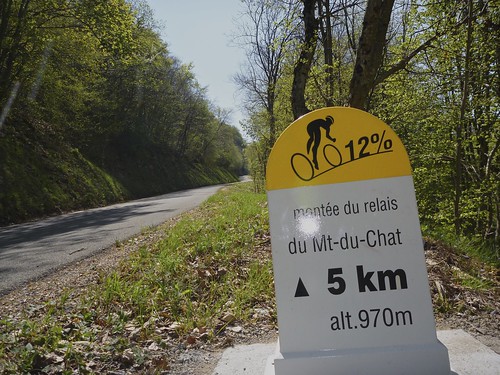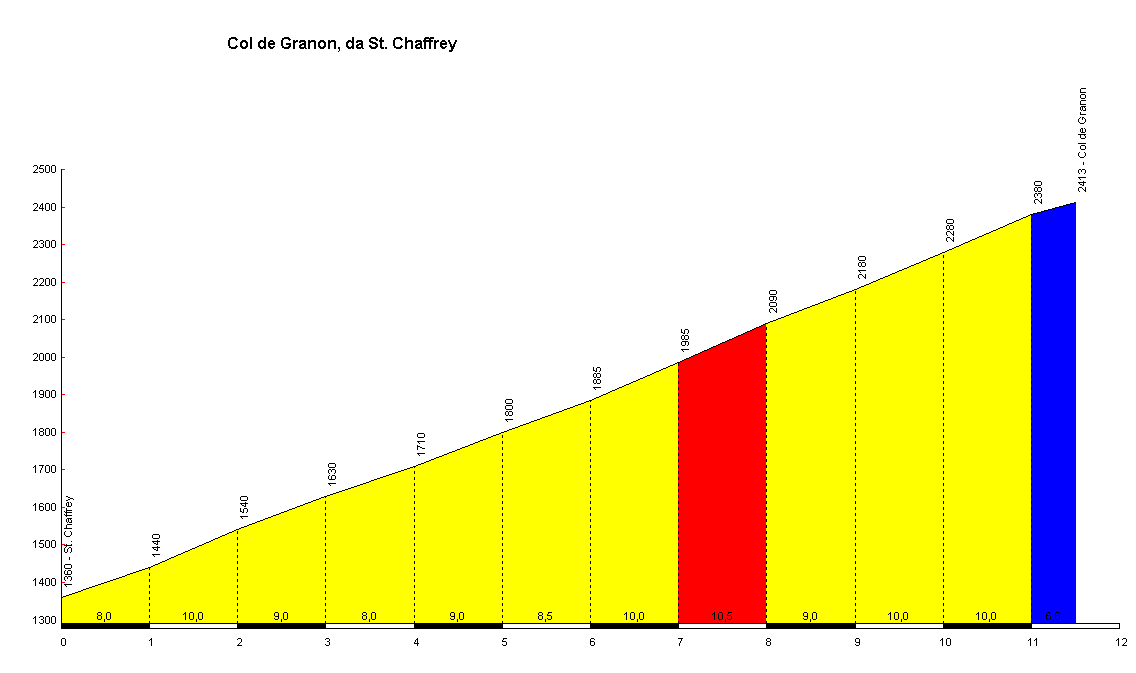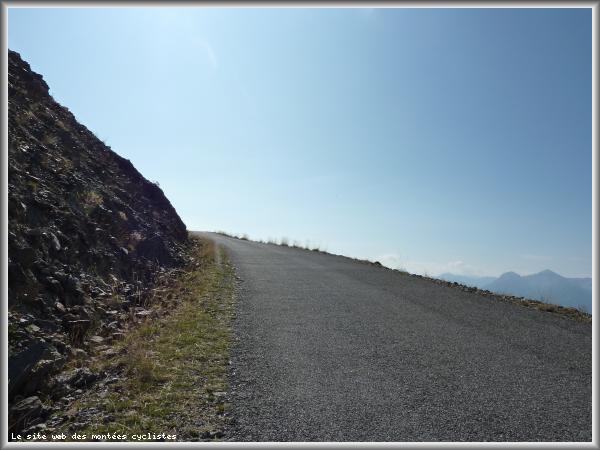#4: Col du Granon (Hautes-Alpes)
The nightmare of Hinault
The city of Briançon is surrounded with legendary climbs. At its south, the great Izoard (2360 m) and its Casse Déserte, made the legend of the Tour. At its east, the famous Col de Montgenèvre (1850 m), opening the doors to Italy, and many times being the launch ramp for a finale towards Sestriere. And at its north-east relies one of the greatest climbs in France, in Europe and in the world, the mighty Col du Galibier (2645 m). But there's actually a fourth climb on the road to the Galibier from Briançon (and no, it's not the Lautaret, which tops at 2058 m).
In 1986, the Tour de France tried an all-new mountain summit finish, in a rather unknown place: the col du Granon. Culminating at 2413 meters high, it became the highest summit finish ever in the Tour de France, dethroning the Tourmalet finish in 1974. This record would stand for 25 years, before the Granon's neighbor, the Galibier, took its place in 2011 hosting a stage finish 232 meters higher. Like a birthday present to celebrate the centenary of the Galibier on the Tour.
Let's go back in '86. On this day, the peloton had to cross three times the 2000 meters line: starting from Gap, they had to climb the Col de Vars, then the Col d'Izoard, then finishing on the Col du Granon, the winter sports station of Serre-Chevalier financing the finish (like the Galibier finish in 2011). A pretty nice stage. But on the slopes of the Granon, happened one of the worst moments of a national hero.
Bernard Hinault said one day "as long as I breathe, I attack". It seems on this July 20, 1986, his lungs couldn't breath the air anymore. At the start of the climb, he was trailing 1 minute and 20 seconds behind his rival, Greg LeMond, having attacked in the Izoard. The Granon climb will completely crush him, and he will lose over 3 minutes to the american. He'll later state "I was crying on my bike, like if my blood was carrying thorns along". This was the very last day Bernard Hinault wore the yellow jersey. And this was also the very last day the Granon appeared in the Tour de France.
Let's take a look at the profile of this climb that made Hinault fail.
Top: 2413 m
Length: 11.5 km
Ascent: 1053 m
Average gradient: 9.2 %
Climbbybike Difficulty score: 140
Despite being a pass, only one side is paved, the other one staying as a dirt track. This is the paved side, and the climb is simply monstrous. To push it simply, it's kinda like the Mont du Chat (east side), but a thousand meters higher. The lack of oxygen is a real test to the organisms and the altitude coupled to a so high degree of steepness does not make the task easier.
The slopes are also very regular, oscillating between 8 and 10.5 % average gradient, and the long straight lines are a real hit to the mind. The whole body is put to the challenge, until the very end with a final kilometer easier than every other on this climb. Even though the climb is short (11.5 km), it could feel neverending for the riders who don't like to climb.
It's a bit strange that the Granon, despite being located between the legendaries Galibier and Izoard, has been completely ignored by the Tour since. There might be two reasons to this: the first one is because the Col du Granon isn't paved on its two sides, and might never be. That means only a mountain top finish is possible on the pass, and it only depends on the will of the station of Serre-Chevalier to let the race go up to it another time. And we should not forget the logistics that could be a problem nowadays, as descending the pass on the other side isn't really safe for most vehicles of the "caravane".
Another reason, probably closer to the rumor, might be that Hinault, following that terrible day in 1986, hates so much this climb he doesn't want ASO to put it again in the Tour. As he now working for the Tour, his voice is still heard. But this is probably more of a story than a real fact.
The Col du Granon is like the Mont du Chat, a climbed-once-and-forgotten climb. It's located in a strategic position, deep beneath the alps. A good approach from the south was made with the Vars-Izoard combo in 1986. From the north, an Iseran-Galibier-Granon trio would be pretty epic, with three climbs approaching 2500 meters high. The Granon nowadays would make an awesome stage finish. Some amateur races like the Défi du Granon (Granon Challenge) or the Haute Route did the experience with great success. ASO definitely needs to come back.
And sorry for being late today. ^^














